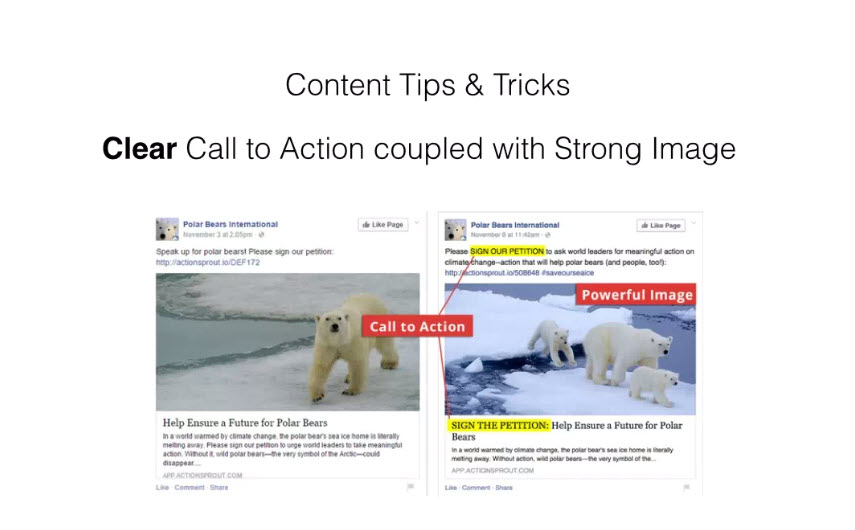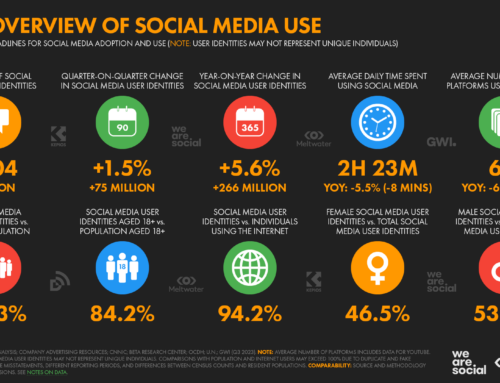
Drew Bernard
A lot of people ask us whether Facebook advertising is a good idea or not. So we are happy to introduce the good folks over at ActionSprout to share some answers! They help nonprofits find supporters on Facebook and get them to act. We’ll be working with Action Sprout to provide more tips, resources, and training on Facebook to you in the coming months. ~Kivi
Guest Post by Drew Bernard, Founder and CEO of ActionSprout
With almost limitless options for slicing and dicing its audience of over 890 million daily users, Facebook advertising can be a highly effective tool in the nonprofit marketer’s toolbox. With four simple strategy points and a budget – even if it’s $50 a month — nonprofits can put Facebook advertising to work for them. Here’s how:
1. Define Your Objective
Is your objective to increase awareness, acquire email addresses and grow fundraising, or have people sign a petition? Regardless of the objective, it’s imperative to know your desired outcome before you begin creating your ad strategy or spending money on Facebook.
2. Define Your Target Audience
While you can reach almost anyone on Facebook, resist the temptation to spray your message. Instead, target those people who will be most receptive to your message and whom you most want involved in your work. Or, put another way, the people who will most appreciate your content and want their friends to see them engage with it in their newsfeed.
Map the attributes of your ideal audience to Facebook’s targeting options. For example, are they men or women, of a certain age, have specific interests, etc. While the many attribute choices can be overwhelming, keep your objective top of mind and you’ll do just fine.
The Facebook algorithm will aide your efforts by
- Showing you how many people could potentially see your ad given your chosen targeting options;
- How many people will likely see the ad given the budget you’ve assigned to the spot and will then
- Promote your ad to those people who are most likely to interact with it, helping ensure it is seen by as many people as possible within your target audience.
A newer Facebook targeting option that can be particularly helpful to organizations with limited budgets is Location Outreach. This targeting feature allows Facebook managers to reach people in a defined geographic area, thereby excluding unnecessary spend on people who don’t make geographic sense. This feature is particularly helpful for organizations with a local supporter based as well as event promotion.
Custom and lookalike audiences are two other popular targeting options that can work really well. Respectively, they allow you to upload your own list or target people who are similar to an existing audience–such as a page’s current fans. Remember when you use either of these options that if an audience is too small, you run the risk of oversaturating it, which will result in wasted ad budget as the audience will naturally tune out if it sees your message too often.
3. Promote Only The Best
With your objective and target audience in mind, the next step is to define your campaign content. Now pay attention, because I am about to share the real secret of successful Facebook advertising and I don’t want you to miss it. Ready?
The secret to getting a very high return on your Facebook advertising is to only spend money to promote content that you know people want to engage with on Facebook and that is delivering your intended outcome. For instance, if your goal is email acquisition, you will only want to spend money on those posts that drive a high percentage of users to complete the action that is delivering their email address to you.
The beautiful thing about Facebook is that you can test your posts organically before spending a dime on them. This may seem counterintuitive. After all, if you have a post that you really want people to see, isn’t advertising the way to make that happen? Well, sure… But here’s the thing.
Facebook’s number one job as a company is to protect the quality of their users’ newsfeeds. And the way they do this is by tracking who engages with which content and which of your content people most appreciate.
If you pay to promote content that is doing well organically, you will find that it spreads much more quickly and costs much less overall to accomplish your goal.
You can think of paying to promote a post people don’t want to engage with as a sort of newsfeed pollution tax. You’re basically telling Facebook that you want to get a piece of content on to the walls of users who have a very low likelihood of wanting it there. This is a bit of an oversimplification, but if you think of paying to promote a post that does poorly as a pollution tax, it will help ensure that you’re only spending money on posts that people want to engage with and that Facebook will happily help you get into more users’ feeds.
The key then is to create several posts and push them out over time. Then, when you find the one that your audience most wants to engage with, start spending money on it.
This strategy of paying to promote only posts that have proven themselves really is the way to consistently accomplish a high return on your advertising budget.
What kind of posts do well will depend on your page, your content and your audience. But a strong image with a clear call to action tends to be a great place to start. Take for example the following post from Polar Bears International that features both in action:

Video is also gaining tremendous momentum with Facebook users. Even very simple video taken from your mobile phone can do quite well if it has engaging content in it. As a bonus, Facebook allows you to insert a call-to-action on the last screen of the advertisement. From ‘donate now’ to ‘sign the petition’, video can be a great vehicle for driving action.
4. Budget & Experiment
No two audiences are the same and what moves one organization’s audience to action may cause another’s to tune out completely. As a result, it is sage to run a test (or three) to find the content that will perform as well as possible before spending your entire budget. Spend a small amount, say five dollars, on two ads with similar content and different graphics, for example, to see which performs best and then let the better-performing ad run.
Because Facebook has five different cost models for advertising (cost per click; engagement; video view; action and thousand impressions), to maximize your investment, make sure that you choose the model that best maps to your goal. For example, if your objective is to gather event RSVPs, cost per action (CPA) is your best choice.
With just $50/month, any organization can run Facebook campaigns to targeted users that support specific objectives. From growing email lists to enhanced giving, the objectives and targeting options are nearly limitless. While small budgets require organizations to be purposeful and strategic, the right mix of content, audience and designed outcome can be instrumental in helping organizations achieve very specific goals.
Drew Bernard is the founder and CEO of ActionSprout.com where he helps nonprofits and political campaigns further their mission by engaging supporters in social media. You can find him on Twitter @DrewBernard






